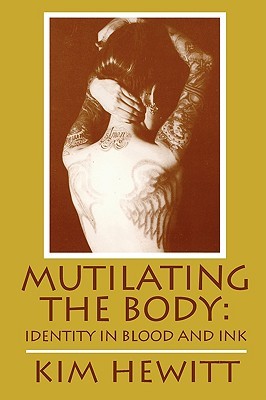
- We will send in 10–14 business days.
- Author: Kim Hewitt
- Publisher: University of Wisconsin Press
- ISBN-10: 0879727101
- ISBN-13: 9780879727109
- Format: 15.4 x 22.8 x 1.4 cm, minkšti viršeliai
- Language: English
- SAVE -10% with code: EXTRA
Reviews
Description
Kim Hewitt explores self-mutilation through history and across cultural divisions, finding these acts "positive expressions of social custom, individualism and resourcefulness . . . symptomatic of crises of identity, religious faith, or modern social structures." In modern contexts, such ancient rituals continue to function as an avenue of symbolic death and rebirth. In her analysis of the origins and motivations of body modification, the author draws upon psychological, medical, and cultural theories on self-inflicted pain-tattooing and scarification as well as fasting, bulimia, and some performance art. She finds such contemporary acts of self-mutilation may "express a change in how society perceives marginalization."
EXTRA 10 % discount with code: EXTRA
The promotion ends in 22d.03:05:31
The discount code is valid when purchasing from 10 €. Discounts do not stack.
- Author: Kim Hewitt
- Publisher: University of Wisconsin Press
- ISBN-10: 0879727101
- ISBN-13: 9780879727109
- Format: 15.4 x 22.8 x 1.4 cm, minkšti viršeliai
- Language: English English
Kim Hewitt explores self-mutilation through history and across cultural divisions, finding these acts "positive expressions of social custom, individualism and resourcefulness . . . symptomatic of crises of identity, religious faith, or modern social structures." In modern contexts, such ancient rituals continue to function as an avenue of symbolic death and rebirth. In her analysis of the origins and motivations of body modification, the author draws upon psychological, medical, and cultural theories on self-inflicted pain-tattooing and scarification as well as fasting, bulimia, and some performance art. She finds such contemporary acts of self-mutilation may "express a change in how society perceives marginalization."


Reviews